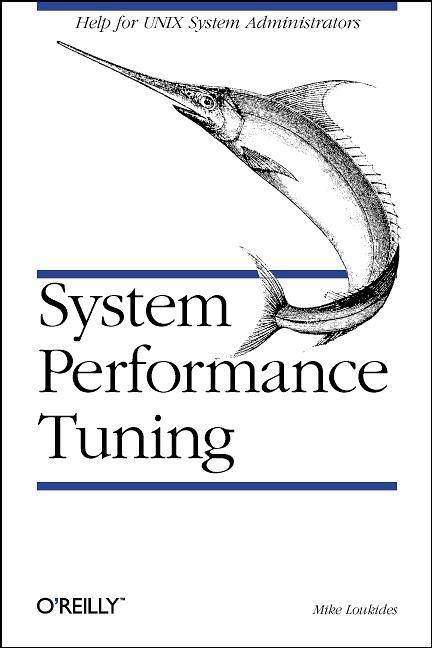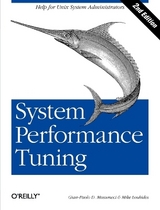
System Performance Tuning
O'Reilly Media (Verlag)
978-0-937175-60-6 (ISBN)
- Titel erscheint in neuer Auflage
- Artikel merken
System Performance Tuning answers one of the most fundamental questions you can ask about your UNIX-based computer: How can I get it to do more work without buying more hardware? Anyone who has ever used a computer has wished that the system was faster, particularly at times when it was under heavy load. If your system gets sluggish when you start a big job, if it feels as if you spend hours waiting for remote file access to complete, if your system stops dead when several users are active at the same time, you need to read this book. Some performance problems do require you to buy a bigger or faster computer, but many can be solved simply by making better use of the resources you already have. Contents include: Real and perceived performance problems. Simple tricks to improve keyboard response. Locating your problem; finding out what your system is doing. Using tools such as at and batch to manage system load. Surviving without a lot of memory. Configuring your I/O system for the best throughput. Detecting an overworked or malfunctioning network. Building a kernel that uses your system more efficiently.
Mike Loukides is an editor for O'Reilly & Associates, with a focus on developing titles on UNIX utilities and system administration. He is the author of System Performance Tuning and UNIX for FORTRAN Programmers. Mike previously worked at Multiflow Computer, where he created all of Multiflow's documentation on programming languages. Mike's interests are system administration, networking, programming languages, and computer architecture. His academic background includes degrees in Electrical Engineering (B.S.) and English Literature (Ph.D.). He is also a passable pianist---in fact, one of the few amateur pianists who even tries to play music by Olivier Messiaen.
Preface. Chapter 1: Introduction to System Performance System Performance Issues System Resources User Communities. Chapter 2: Monitoring System Activity Tools of the Trade: What Your System is/ Really Doing System Load Average Process Summary and Status Idle Time The cron Facility Accounting Administrative Setup for sar SunOS Performance Meters Benchmarks. Chapter 3: Managing the Workload Some Tricks for Users Cleanup: Reducing the Workload Scheduling Priority Off-peak Job Submission Shell Time Limits CPU Capacity. Chapter 4: Memory Performance Paging and Swapping How to Tell if Your System is Paging Conserving Memory Tuning the Paging Algorithm Managing the Swap Area Computing Memory Requirements. Chapter 5: Disk Performance Issues I/O Subsystem Configuration Partitions and Filesystems Planning and Creating Filesystems Balancing I/O Workload Filesystem Buffers In-memory Filesystems Striped Filesystems Conserving Disk Space. Chapter 6: Network Performance UNIX Networking Introduction to TCP/IP Problems Basic Network Etiquette Network Performance Issues Networks and CPU Load RFS: System V Remote File Sharing Special Considerations for STREAMS. Chapter 7: Terminal Performance Chattering Terminal Lines Disabling a Bad Terminal Line (BSD) Disabling a Bad Terminal Line (System V) Character Lists Terminal Drivers and STREAMS. Chapter 8: Kernel Configuration Why Build a Custom Kernel? Configuring a BSD Kernel Configuring a System V Kernel. Appendix A Real-time Processes in System V.4 Real-time and Time-sharing Processes Manipulating Priorities with priocntl (V.4) Scheduler Configuration Tables. Appendix B A Performance Tuning Strategy. Glossary. Index. List of Figures 2-1 A performance meter 5-1 Typical BSD disk partitioning 5-2 Disk partitioning--Fujitsu Eagle 5-3 Blocks and fragments in the BSD filesystem 5-4 The buffer cache 6-1 The redesigned network A-1 Global priority scheme. List of Tables 2-1 Reports Available from sar 3-1 Configuration Parameters for Kernel Tables 3-2 Other Parameters Determining System Capacity 8-1 Filesystem Parameters 8-2 Process Management Parameters 8-3 Memory Management Parameters 8-4 STREAMS Parameters 8-5 Message Facility Parameters 8-6 Shared Memory 8-7 Semaphore Configuration Parameters 8-8 System V.4 Process Limit Parameters
| Erscheint lt. Verlag | 11.12.1990 |
|---|---|
| Zusatzinfo | Ill. |
| Verlagsort | Sebastopol |
| Sprache | englisch |
| Maße | 152 x 228 mm |
| Gewicht | 480 g |
| Einbandart | kartoniert |
| Themenwelt | Informatik ► Weitere Themen ► Hardware |
| ISBN-10 | 0-937175-60-9 / 0937175609 |
| ISBN-13 | 978-0-937175-60-6 / 9780937175606 |
| Zustand | Neuware |
| Haben Sie eine Frage zum Produkt? |
aus dem Bereich



